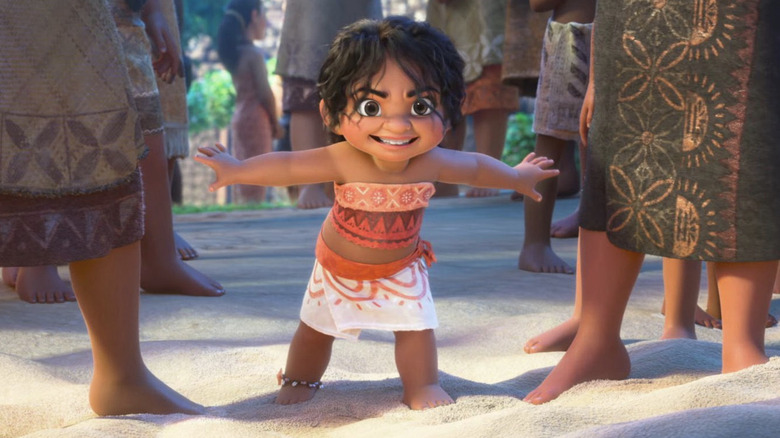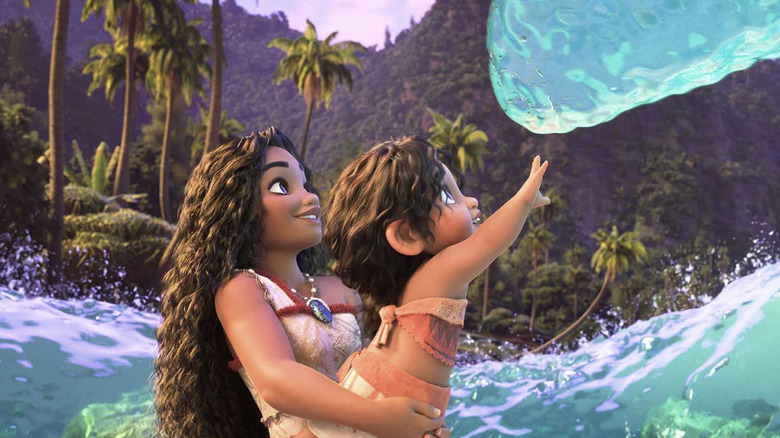When looking at the early years of Disney animated movies, family is a pretty touchy subject. An overwhelming number of characters have dead parents — humans and animals alike — which often thrusts the protagonist into a dilemma they have to figure out how to solve all on their own. As much as folks joke about it now, it makes total sense. For one — many early Disney movies are based on fairy tales or classic literature, which often feature orphans in the title role. Namely, because it allows a young character to go on an adventure without necessitating a subplot about a parent worried about them, and it’s a fast way for the audience to empathize with the character. If there’s no parental oversight and a bit of danger, we as the audience will immediately want to see the characters overcome whatever conflict they face on their own. Not to mention, if parents are involved, the writers then need to come up with a reason as to why they didn’t solve the problem facing their child for them.
In recent years, however, Disney has become far more interested in the ways family dynamics can be the source of conflict in their own right. “Encanto” is about a family filled with generational trauma, “Strange World” is about a family who must set aside their differences to save their society, and “Wish” is about a character becoming radicalized when magical political corruption impacts her grandfather. But Disney’s choice to include nuclear families really kicked off with “Moana,” and they’ve taken it a step further with “Moana 2.” As the titular hero goes off on another adventure to save the future of her people on Motunui, she is torn this time around because she has a better grasp on realizing what is at stake if she fails — and who will be most let down if she doesn’t return. Sure, she’s worried about her parents, but she’s most worried about her little sister Simea, who introduces a brand new familial dynamic to the world of Walt Disney Animation.
Simea was inspired by one of the Moana 2 director’s children
Moana is nearly 20 when we see her in “Moana 2,” which puts Simea somewhere around three years old. While this seems like a pretty big age gap for siblings, it’s far more common than people realize. In fact, the relationship between Simea and Moana was modeled after co-director David Derrick Jr.’s children who also have a large age gap. During a “Moana 2” press day, the director talked about watching his youngest realize the dynamic was about to shift after the two had spent so much time together over a summer break.
“There was a very difficult moment when [his young son] realized [his eldest daughter] was going to college and not coming back home,” he explained. “That this pillar of joy in his life was suddenly not always gonna be there.” It’s a very tough thing to explain to a small child, who not only has difficulty grasping the length of time (Simea refers to three days as “forever”) but also big-picture concepts like destiny and obligation.
The relationship between Moana and Simea is arguably the strongest part of the sequel because it forces Moana to look at the world from an entirely different perspective … and because Simea is so dang adorable! The first “Moana” featured an early scene showing a young Moana around the same age as Simea that fans totally adored, so much so that Disney even made dolls of Young Moana that quickly became one of the most popular toys of the year. Simea takes that cuteness a step further because she has a huge personality clearly developed by looking up to her sister. Moana was an only child for most of her life, so she’s used to doing things on her own and keeping herself occupied, but Simea has never known a life without her big sis. Her feelings are huge and completely understandable, which only adds to her being one of Disney’s most adorable characters. Here’s hoping that if we get a “Moana 3,” Simea gets to go on the adventure next time.
“Moana 2” is now playing in theaters everywhere.



Leave a Reply